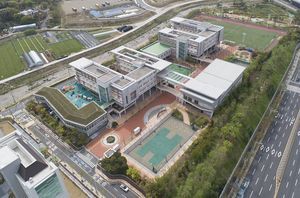In 1968, the first Korea-US joint military training launched
In the Team Spirit training, the first landing exercise began
Ulchi exercise and US-ROK joint training were integrated in 2022
The joint exercises and training are separated from Command Post Exercise (CPX), Field Training Exercise (FTX), and training
![北 가장 꺼리는 ‘한미연합 군사훈련’ 역사는 어떻게 되나…北 핵·미사일 위협의 억제 핵심[이현호 기자의 밀리터리!톡]](https://contents-cdn.viewus.co.kr/image/2024/03/CP-2023-0094/image-6fe2a2d0-c985-4c51-86a5-31363eec7ff9.jpeg)
For the first time this year, US and South Korean military authorities are conducting Freedom Shield (FS), a regular joint exercise for the defense of the Korean Peninsula in response to North Korea’s nuclear threat. The exercise will take place from the 4th to the 14th.
The Joint Chiefs of Staff and the United States Forces Korea (USFK) unveiled the FS exercise schedule on the 28th, stating, “During the exercise period, we will expand various joint field maneuvering exercises on the ground, sea, and air to enhance the interoperability of the US-ROK alliance and improve our ability to carry out joint operations.”
The US and South Korean military authorities will conduct many practical exercises during the FS exercise period, including joint air strike exercises, tactical live-fire exercises, joint air-to-air shooting, air-to-ground bombing exercises, and team training (a battalion-level joint air exercise). A Joint Chiefs of Staff official said, “Last year, we conducted 23 US-ROK joint field maneuvering exercises in March and April, but this year, we will conduct 48 in March alone, and more than twice as many joint exercises will be conducted.”
The Joint Chiefs of Staff specifically plan to strengthen the response capabilities of the US-ROK alliance by conducting this FS exercise realistically, focusing on neutralizing the North Korean nuclear threat and conducting multi-domain operations using ground, sea, air, cyber, and space assets based on exercise scenarios that reflect recent war lessons and changing threats and security situations.
The very first joint exercise was the Focus Lens command post exercise in 1954
If you pick one thing North Korea loathes the most, the US-ROK (military) exercise will top the list. The purpose of the US-ROK joint exercise is to enhance the defense readiness conditions for responding in case of emergency, such as North Korea’s nuclear and missile threats, and to improve the capability of mutual operational control and joint operations between the US and South Korea.
Depending on the situation, they are conducting military exercises, including scenarios to topple the North Korean regime by immediately retaliating against Kim Jong Un, the Chairman of the North Korean State Affairs Commission, which is why North Korea reacts sensitively every year.
The sensitive reaction of North Korea is because the US-ROK joint exercise has played a central role in the defense of South Korea for the past 70 years and has established itself as a symbol of the solidity of the US-ROK alliance. Since the US-ROK Mutual Defense Treaty was officially signed in 1953, US-ROK joint exercises have been conducted in various sizes, forms, and names for 70 years, and the types are also very diverse.
The first US-ROK joint exercise was conducted in 1954 after the US-ROK Mutual Defense Treaty was enacted. It was the Focus Lens command post exercise hosted by the United States Forces Korea (USFK) and the United Nations Command (UNC).
![北 가장 꺼리는 ‘한미연합 군사훈련’ 역사는 어떻게 되나…北 핵·미사일 위협의 억제 핵심[이현호 기자의 밀리터리!톡]](https://contents-cdn.viewus.co.kr/image/2024/03/CP-2023-0094/image-7cbec31e-0a41-453e-bf03-beb9181deb50.jpeg)
The Focus Lens (1954-1968) exercise was conducted with limited training goals to repel a North Korean invasion and reestablish a demilitarized zone near the armistice line, assuming a recurrence of the Korean War. If the North Korean army invaded, the US and South Korean forces considered a plan to retreat step by step to the Han River and vacate Seoul. Afterward, they trained on a scenario to recover the area south of the Military Demarcation Line after reorganizing the battle line.
In 1961, Foal Eagle (FE) exercises started as small-scale rear area defense training, which expanded into joint and combined Field Training Exercises (FTX).
The joint exercises became urgent from 1968 onwards. When the United States was struggling in the Vietnam War, North Korea launched an anti-South communization offensive, including a raid on the Blue House on January 21 and the capture of the US Navy intelligence collection ship Pueblo two days later. In response, our government independently conducted the Ulchi exercise, a government-led war exercise, under the supervision of the NSC from July 1968.
Notably, the US administration’s adoption of the Nixon Doctrine and the subsequent plan by President Carter to reduce US forces in Korea were the catalysts for the full-scale development of joint exercises and training between the US and South Korea. At that time, the two countries conducted the Focus Retina exercise in March 1969 to fill the defense gap caused by the reduction of US forces in Korea and to check the US reinforcement system on the Korean Peninsula in case of emergency.
Significant changes with the establishment of the US-ROK Combined Forces Command in 1978
Through this, they demonstrated the capability and will of the US forces to reinforce the Korean Peninsula. However, when the Nixon administration withdrew the 7th Division of the US forces from Korea, the US security commitment was again questioned. Eventually, the two countries showcased the solidity of the US-ROK alliance once again through the Freedom Bolt exercise in 1971.
However, in response to the Carter administration, which was elected with the promise of withdrawing US forces from Korea in 1976, the Park Chung Hee government presented a route for independent nuclear development, causing a clash between the two countries. Still, in this process, the two countries strengthened the joint exercise.
They conducted the Ulchi Focus Lens (UFL) exercise, combining the Focus Lens exercise led by the UNC and the Ulchi exercise, a Korean government-wide war exercise. They also conducted the Team Spirit (TS), the largest outdoor maneuvering exercise of the two countries, for the first time. The Team Spirit exercise was conducted from 1976 to 1993. Initially, it started as a landing exercise, but its scale expanded as naval and air exercises were added, and ground exercises included river crossing exercises and regular war exercises.
Then, in 1978, a period of upheaval started with establishing the US-ROK Combined Forces Command, the US-ROK joint exercise, now led by the Combined Forces Command instead of the UNC.
![北 가장 꺼리는 ‘한미연합 군사훈련’ 역사는 어떻게 되나…北 핵·미사일 위협의 억제 핵심[이현호 기자의 밀리터리!톡]](https://contents-cdn.viewus.co.kr/image/2024/03/CP-2023-0094/image-96ca4358-8f94-40e3-ac16-95e5c4aa44c1.jpeg)
The 3rd Engineer Brigade of the Army and the Engineer Battalion under the 2nd Division of the US and the Combined Division are conducting a joint river crossing exercise as part of the FS/TIGER, which was in practice from May 6 to 17 last year at a training ground in Yeoncheon County, Gyeonggi Province. Photo provided by the Army
Above all, the TS exercise was conducted in three stages of strategic deployment-operation-return, and the size of the exercise, which initially involved 46,000 participants, increased to 200,000 by 1984—the training period, which was ten days, later increased to 70-80 days. With the deployment of US strategic assets such as B-52 strategic bombers and Lance ground-to-ground missiles, the TS expanded into a major war exercise that even included nuclear forces.
However, in line with the times, the US and South Korea suspended the TS exercise in 1992 due to the peace mood between North and South Korea, such as the declaration of denuclearization of the Korean Peninsula in 1991. However, North Korea took advantage of this suspension of the exercise to formalize nuclear development, and when the TS exercise resumed in 1993, the first North Korean nuclear crisis began.
In response, the United States upgraded the TS to a US-ROK joint wartime reinforcement exercise. The joint wartime reinforcement exercise is also called RSOI. This is an acronym for Reception, Staging, Onward Movement, and Integration, which refers to the process of deploying US reinforcement forces to the Korean Peninsula in case of emergency. In addition, the independent exercises of the Korean military, such as the corps-level outdoor maneuvering exercise and the Hoguk field training exercise, also began.
Since 2002, the US-Korea joint exercises have been conducted twice a year.
Coinciding with North Korea’s withdrawal from the NPT (Nuclear Non-Proliferation Treaty) in 2002, the US-Korea joint exercises expanded when the RSOI and Foal Eagle training were integrated. The division of the US-Korea joint exercises into the first and second half of the year also began in 2002. The US-Korea joint exercises have been conducted in the first and second half of the year since 2002.
The combined forces wartime reinforcement exercise and the Foal Eagle exercise were integrated into the Combined Forces Reinforcement and Foal Eagle (RSOI/FE) exercise in the first half of the year, and the Ulchi Focus Lens exercise was conducted in the year’s second half.
Then, a significant variable emerged in the US-Korea joint military training. In 2006, an agreement was reached between the two countries to transfer the wartime operational control (OPCON) from the US to South Korea, and the Joint Chiefs of Staff, along with the US-Korea Combined Forces Command, established a new exercise concept based on the plan of the South Korean military lead and US support.
In this context, the Combined Forces Reinforcement and Foal Eagle exercise conducted in the first half of the year changed to the Key Resolve and Foal Eagle (KR/FE) exercise, and the Ulchi Focus Lens exercise conducted in the second half of the year changed to the Ulchi Freedom Guardian (UFG) exercise.
Considering the meaning and purpose of the joint exercises, the US and South Korea decided to change the name of the UFG exercise in the second half of the year to the Ulchi Freedom Shield (UFS) starting in 2022 and the KR/FE to the Freedom Shield (FS) beginning in 2023.
![北 가장 꺼리는 ‘한미연합 군사훈련’ 역사는 어떻게 되나…北 핵·미사일 위협의 억제 핵심[이현호 기자의 밀리터리!톡]](https://contents-cdn.viewus.co.kr/image/2024/03/CP-2023-0094/image-ffd425dc-1598-44c8-aa7b-da86030d3076.jpeg)
In 2019, the government and joint exercises between the US and Korea were separated. The Ulchi Taegeuk exercise, a South Korean military solo exercise, was conducted together. However, because the government exercises mainly focused on non-military crises such as disasters, there were limitations in improving the domestic disturbance(theatre level) performance ability through wartime national capacity consolidation.
Eventually, the US and South Korea conducted the Ulchi Freedom Shield exercise, which integrates government exercises (Ulchi exercises) and US-Korea joint exercises, in the second half of 2022 to demonstrate the deterrence against North Korea of the US-Korea alliance and improve the ability to perform joint operations.
From the second year of the Moon Jae In administration in 2018, as the inter-Korean and US-North Korea dialogue was formed, the US-Korea joint exercises faced the phase of suspension and reduction. With the change of regime, the US-Korea joint training was restarted. The Yoon Suk Yeol administration revived the US-Korea joint exercises as soon as it took office. In August 2022, the UFG exercise in the second half of the year was renamed to the Ulchi Freedom Shield, and in March 2023, the KR/FE exercise in the first half of the year was renamed to the Freedom Shield (FS) and resumed.
North Korea reacts most sensitively to the joint landing exercise Double Dragon Exercise.
Notably, since the Yoon Suk Yeol administration, the US-Korea joint exercises and training scenario has been completely revised to quickly check the ability to transition to a war situation from a peacetime situation. Notably, the UFS, which includes the government exercises Ulchi exercise in Part 1, has changed to a method of proving the ability to perform war on a national scale. It even included civil defense air raid training in which all citizens participate.
In Part 2 of the military exercise, not only the command post exercise but also the combined integrated firepower training, Air Force Buddy Squadron training, and division-level Double Dragon joint landing training, etc., about 30 joint outdoor maneuvering trainings were conducted at the same time, showing the true face of a comprehensive exercise. The most notable training during last year’s US-Korea joint exercises and training was the Double Dragon Exercise, a joint landing exercise. The Double Dragon Exercise was expanded from the brigade level or below to the division level, conducting large-scale training to prepare for naval and aerial warfare. The combined landing assault training, the decisive action stage of the Double Dragon Exercise, is the highlight. From the sea, the airborne assault team and the sea assault team simultaneously land on the target point and recapture the target point.
As seen from the Incheon landing operation in the past, the landing exercise has a characteristic of offensive rather than defensive by attacking the opposite’s weak point from the rear. Therefore, the Double Dragon Exercise conducted as a landing exercise is the joint exercise North Korea is most sensitive to.
![北 가장 꺼리는 ‘한미연합 군사훈련’ 역사는 어떻게 되나…北 핵·미사일 위협의 억제 핵심[이현호 기자의 밀리터리!톡]](https://contents-cdn.viewus.co.kr/image/2024/03/CP-2023-0094/image-d5b82b4b-143e-40cf-b49e-9b0e5436fb19.jpeg)
The US-Korea joint exercises and training are divided into Command Post Exercise (CPX), Field Training Exercise (FTX), and training.
According to the Ministry of National Defense, a Command Post Exercise is an exercise to train commanders and staff at all levels, as well as operations and communications personnel. It aims to maintain communication in virtual situations, move and operate command posts, practice command and reference procedures, apply operational plans and rules, and enhance command and control capabilities under various conditions.
Field Training Exercise is a wide-ranging and long-term exercise that involves all tactical situations and is conducted as a bilateral training with the participation of all or part of the personnel and equipment of division-level or higher units. It aims to acquire various tactical specifications comprehensively, including combat support situations. In particular, it is conducted to test doctrine and formation or to demonstrate combat power.










Most Commented